Driving along East Harford Street in Milford, a compact borough in Pike County nestled between National Historic Landmark Grey Towers and National Park Service’s Delaware River National Recreational Area, it is easy to miss Mott Street.
A late 19th century home now hosting the regional newspaper is on one corner of Mott and East Harford and a low, one-story carpet shop is on the other. It looks a lot like the other small alleys branching off the borough’s main drag. The narrow street lined with a handful of well-maintained residences shields the newly rehabilitated steel truss bridge at the road’s end.
Mott Street Bridge’s Story
The Penn Bridge Company constructed the Mott Street Bridge in 1902-1903 to carry traffic over Sawkill Creek.
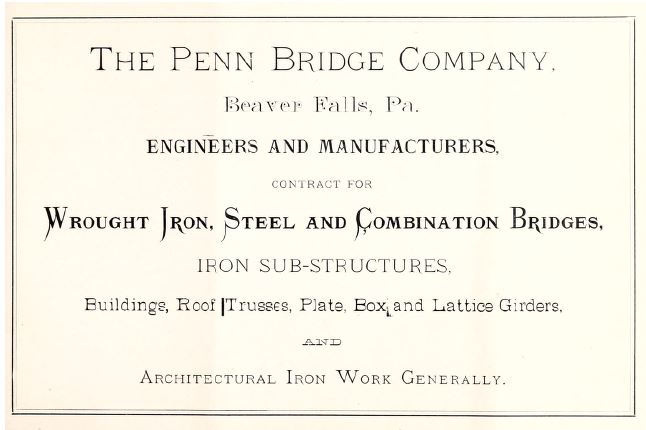
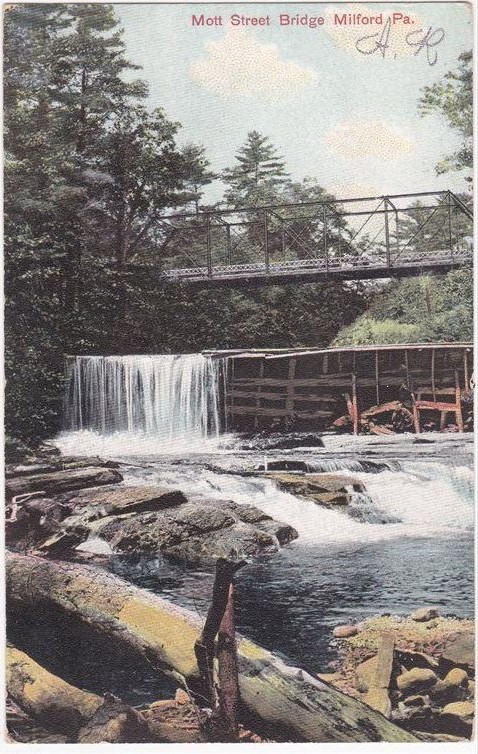
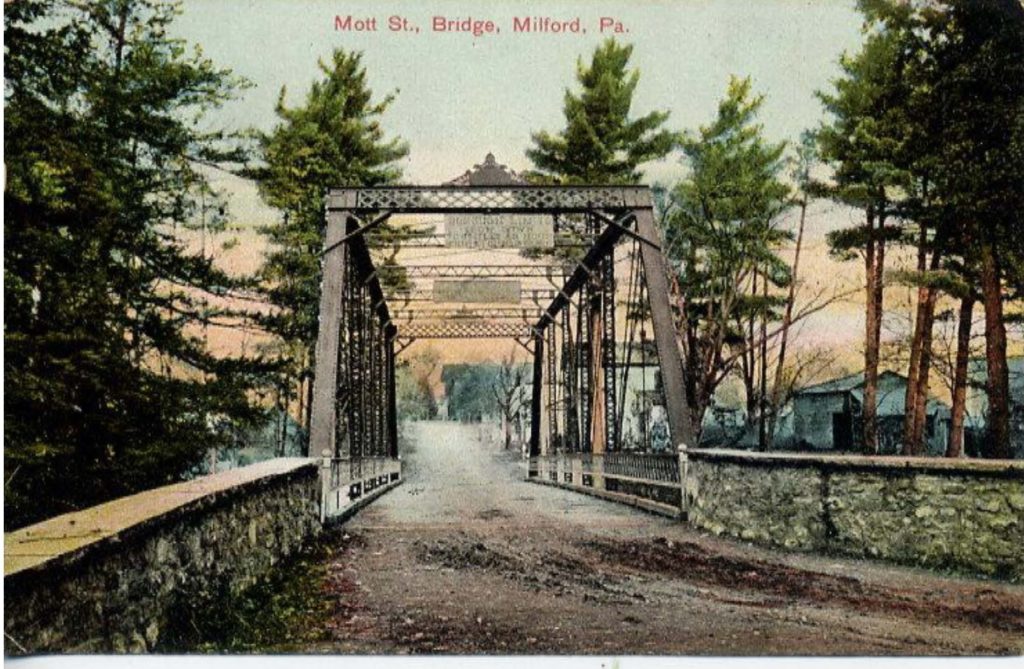
The structure is located between two dams that powered the many small industries along the waterway.
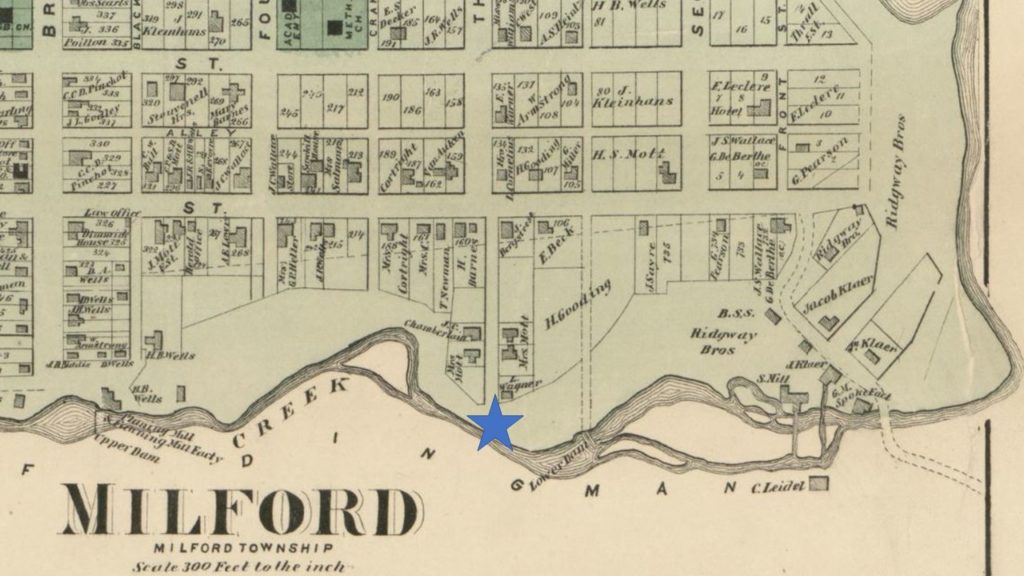
Until 1988, it continued to carry vehicular traffic between downtown Milford to the north and a local road and the National Park Service’s northern trail system to the south. From 1988 to 2006, the crossing was restricted to pedestrians only. By 2006, deterioration closed the bridge to all modes of traffic.
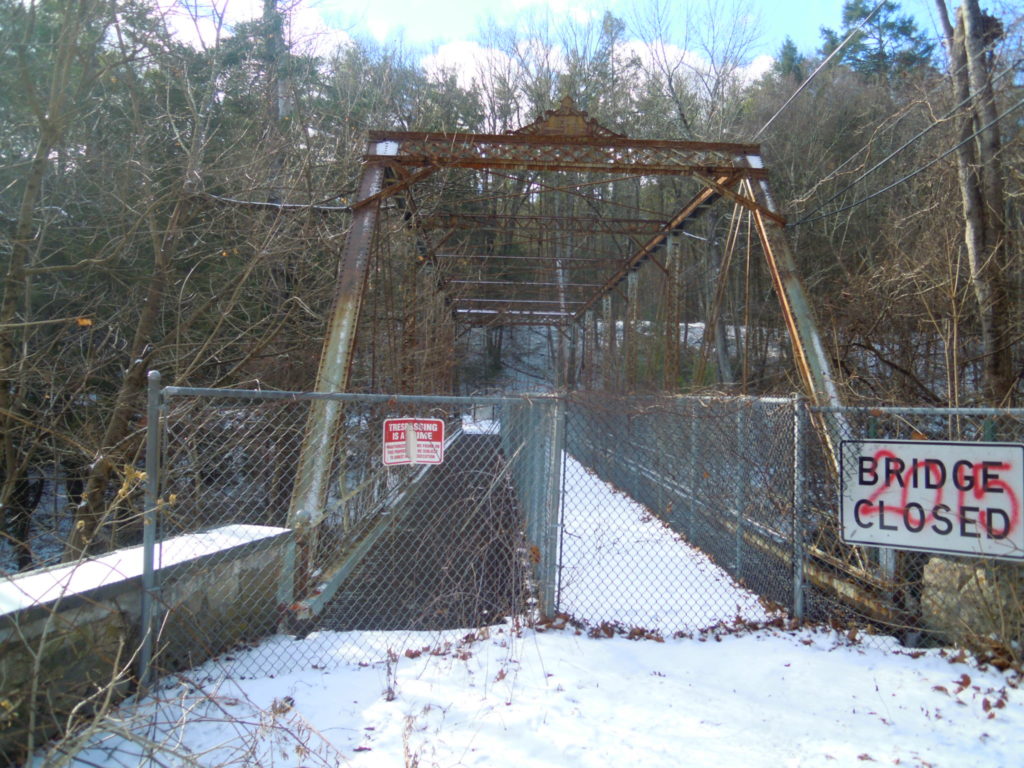
Example of a Pratt Thru Truss
Mott Street Bridge is a Pratt thru truss. The Pratt truss was first introduced in the mid-nineteenth century and became the most common metal truss bridge in use in the early twentieth-century.
In 2019, the Pennsylvania State Historic Preservation Office (SHPO) and Pennsylvania Department of Transportation (PennDOT) reevaluated the National Register eligibility of the Commonwealth’s metal truss bridge population. Today, Pratt trusses make up the majority of the surviving metal truss bridge population.
A Pratt truss gets its strength from diagonal members in tension and vertical members in compression.
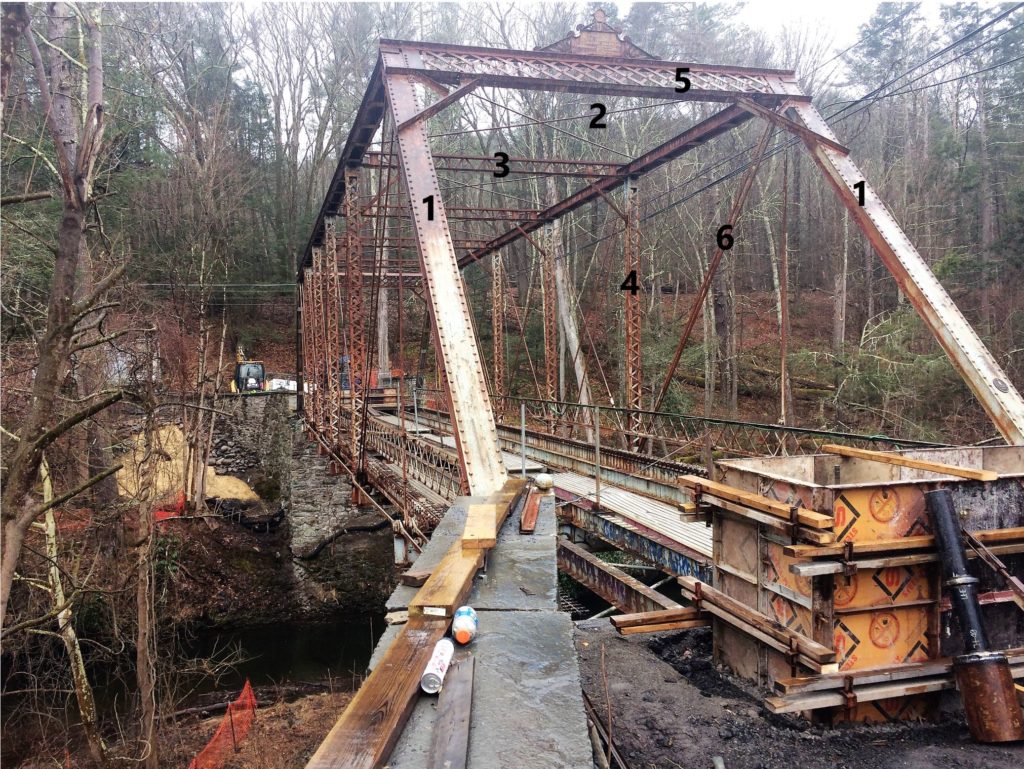
The two sides (trusses) of a thru bridge are connected at the top and bottom by lateral bracing and struts. Some of Mott Street’s structural components are joined by pins and rivets. U-bolt hangers bring the trusses and floorbeams together.
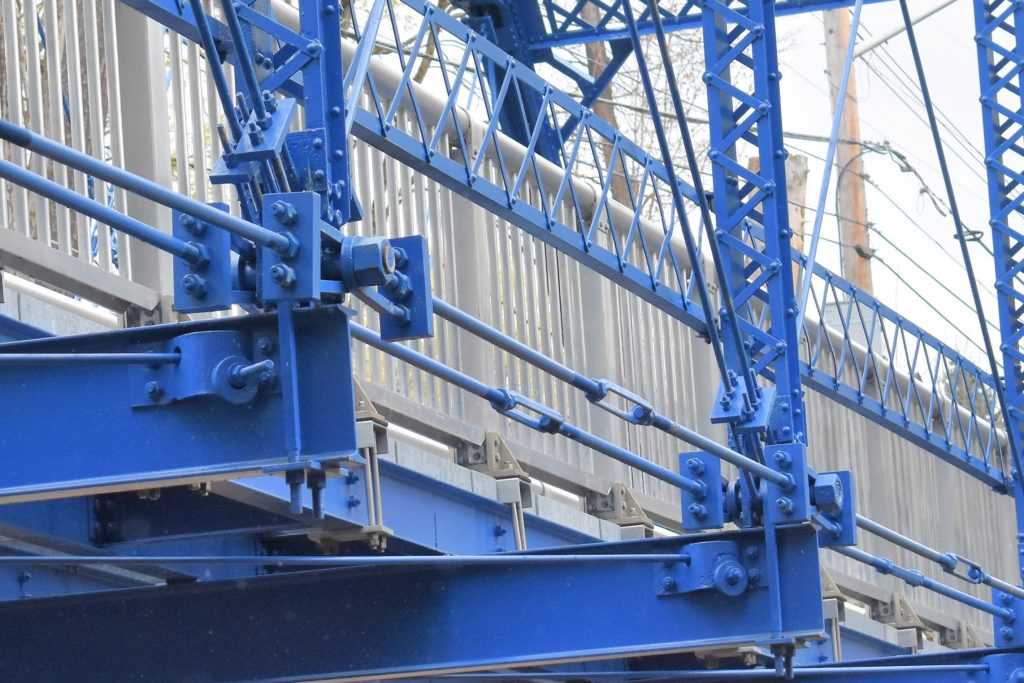
Metal strips form latticework on the verticals, portal strut, top lateral struts, and the decorative railing. The truss sits upon tall stone abutments. Penn Bridge Company memorialized their effort with a bridge marker on both portals.
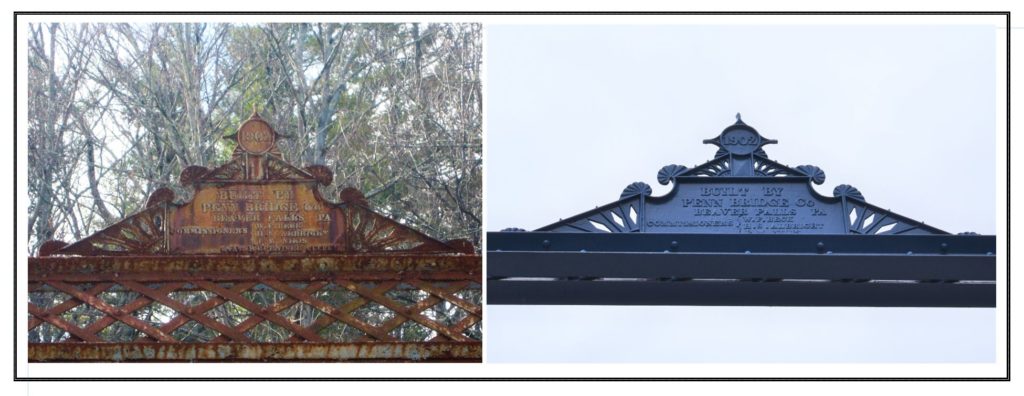
Preserving Mott Street Bridge
Pike County, owners of Mott Street Bridge, understood the importance of maintaining a link between the borough and the National Park Service’s trails. A bridge replacement was initially proposed to address this need. Due to the willingness of county commissioners to maintain the historic structure, rehabilitation and continued use by pedestrian traffic resulted in a preservation outcome.
The Pennsylvania Department of Transportation (PennDOT) awarded the county a Transportation Alternatives Program (TAP) grant to help maintain the crossing’s connectivity. The TAP grants are federally funded [through the Federal Highway Administration (FHWA)], which requires PennDOT to consider effects of the project on National Register-eligible and -listed properties.
The Mott Street Bridge (PA-SHARE Resource #2004RE10587) was determined eligible for the National Register of Historic Places for its technological significance. It also contributes to the National Register of Historic Places-listed Milford Historic District (Boundary Increase, PA-SHARE Resource #1998RE00132).
PennDOT, on behalf of FHWA, coordinated the project scope with the county, the Pennsylvania State Historic Preservation Office, the National Park Service, and members of the public (called Section 106 Consulting Parties) to ensure the work complemented the bridge’s original design, materials, and engineering. Repairs were made with similar materials and design features. Components too deteriorated to be repaired were replaced. Where possible, the replacement parts match the historic materials and design.
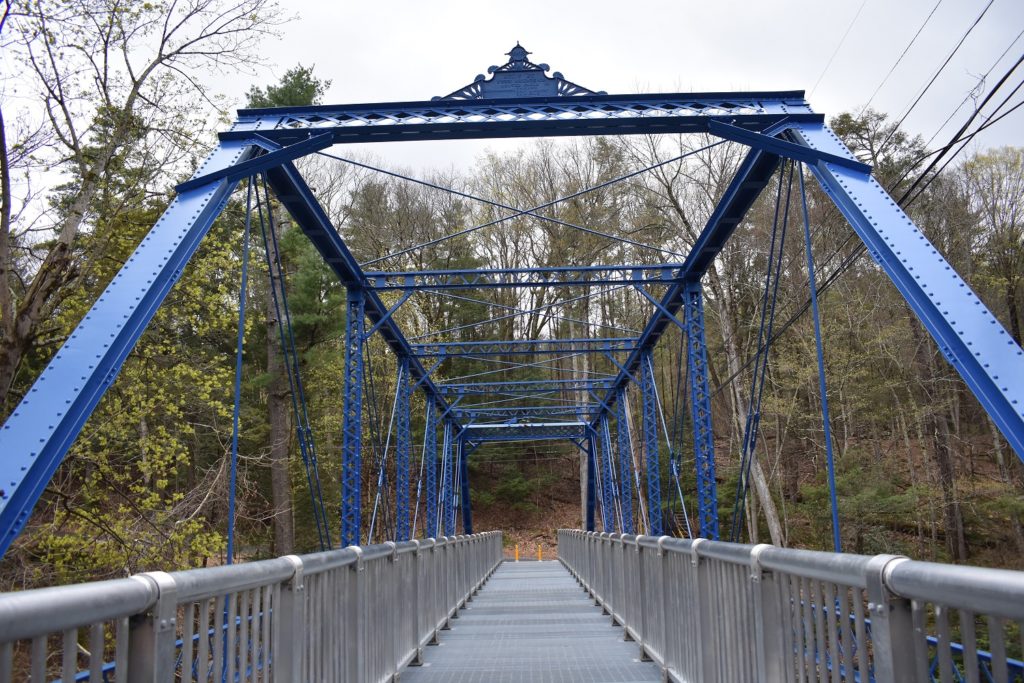
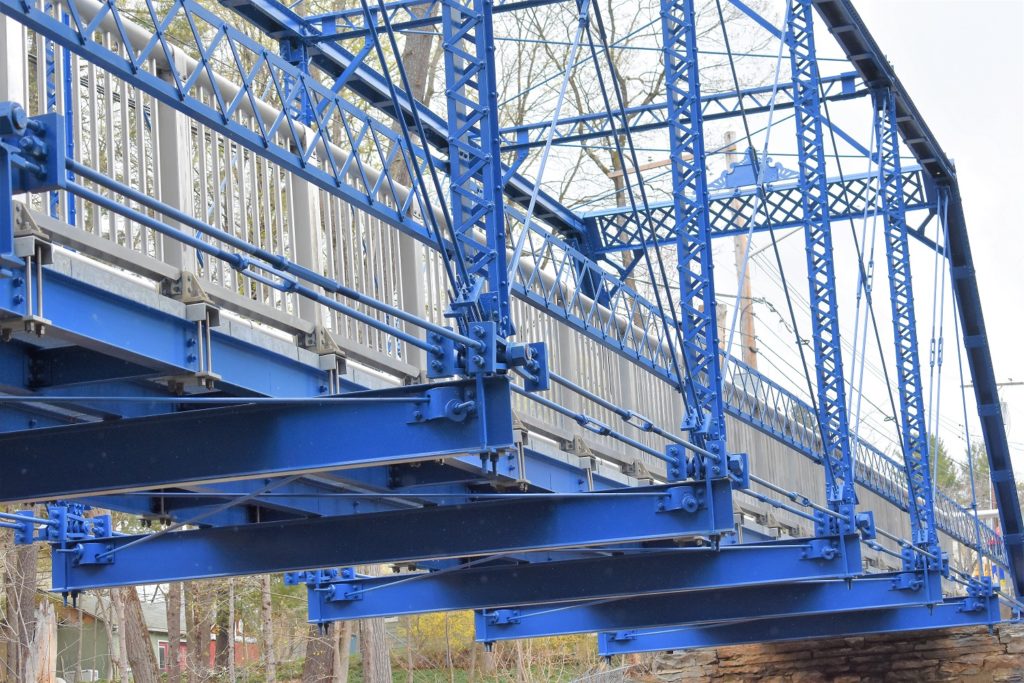
The result is a rehabilitated pedestrian bridge that connects scenic trails and Milford’s walkable historic downtown.
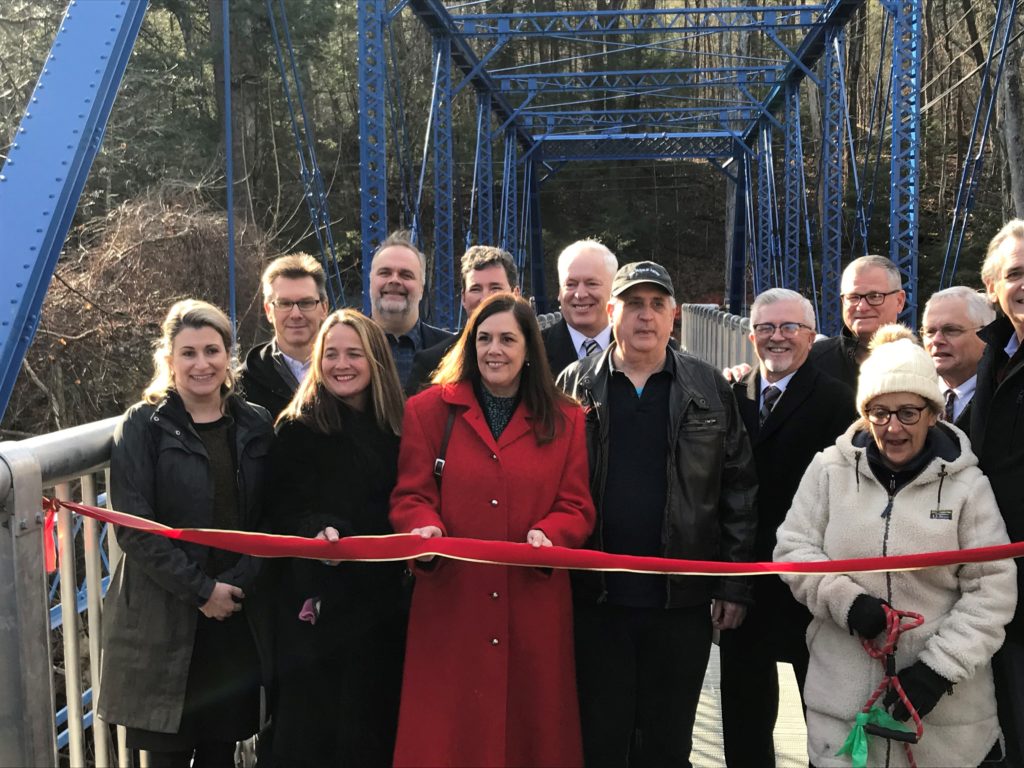
This week’s guest author is Kristina Lammi Thompson. Kris is a Cultural Resources Specialist for PennDOT’s District 5 and an Above-Ground Cultural Resources Supervisor with PennDOT’s Bureau of Project Delivery.
Comment Policy
PHMC welcomes and encourages topic-related comments on this blog. PHMC reserves the right to remove comments that in PHMC’s discretion do not follow participation guidelines.
Commenters and Comments shall be related to the blog post topic and respectful of others who use this site.
Commenters and Comments shall not: use language that is offensive, inflammatory or provocative (this includes, but is not limited to, using profanity, obscene, or vulgar comments); disparage other commenters or people; condone illegal activity; identify the location of known or suspected archeological sites; post personal information in comments such as addresses, phone numbers, e-mail addresses or other contact details, which may relate to you or other individuals; impersonate or falsely claim to represent a person or an organization; make any commercial endorsement or promotion of any product, service or publication.
If you would like to comment on other topics not related to this blog post but related to PHMC, please fill out the PHMC Contact Us Form.

0 Comments
1 Pingback